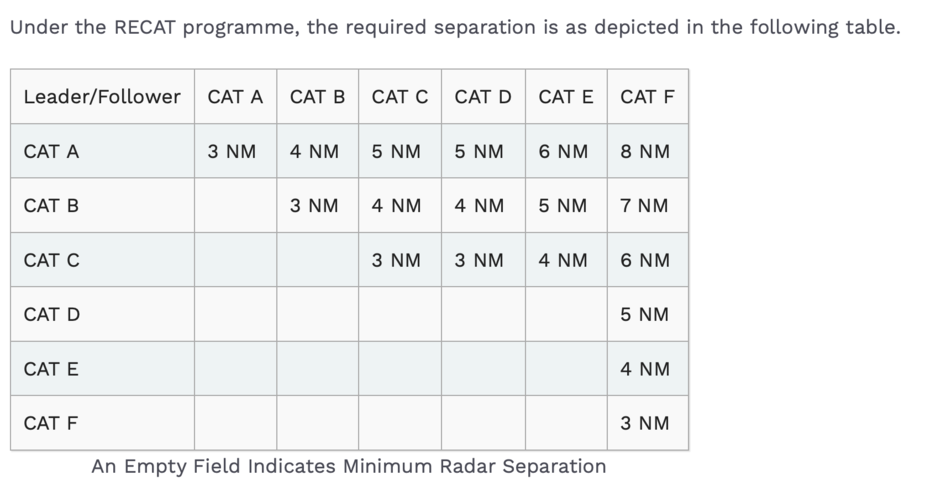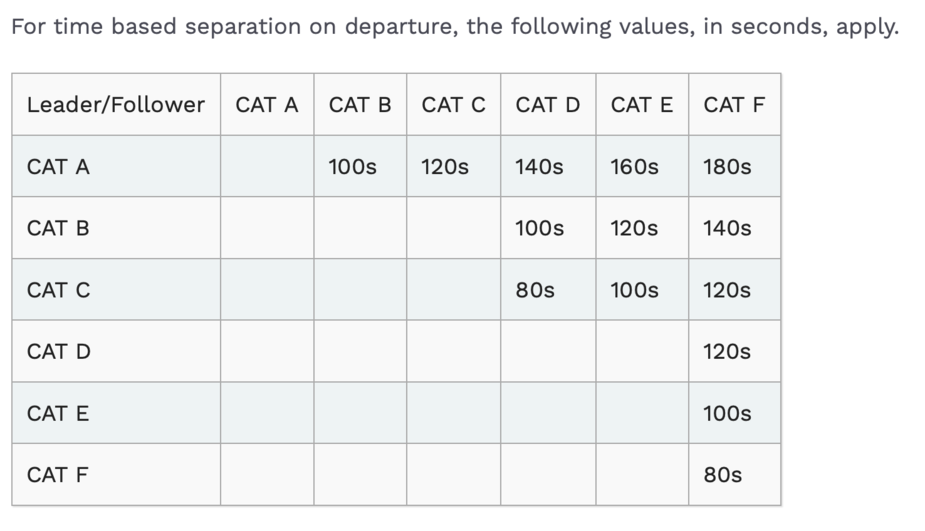Wake induced crash of Robin vs Antonov, Video:
https://www.bfu-web.de/DE/Service/V180-Video/V180-Video_node.html
This was a light prop Antonov… imagine the energy of a wake of a heavy jet.
Wake Separation Minima:
“RECAT”
Re-categorisation
After years of extensive, collaborative research between EUROCONTROL, the FAA, their research facilities and the aviation industry, the experts concluded that the required separation between certain aircraft could be safely decreased. Research had proven that, in addition to weight, other aircraft characteristics – such as speed and wingspan – also affect the strength of the wake generated as well as the following aircraft’s reaction to that wake. Using that information, aircraft were re-assigned to one of six new categories (A through F) which were derived by redefining the transition weight between the old categories, adding a Super category and splitting each of the Medium and Heavy categories into two new ones. The resulting categorisation is as follows:
CAT A – “Super Heavy”
CAT B – “Upper Heavy”
CAT C – “Lower Heavy”
CAT D – “Upper Medium”
CAT E – “Lower Medium”
CAT F – “Light”


The Antonov case was a HUGE wake up call, as nobody was aware of the massive wakes this plane produces, most of us who flew or fly it included.
Jet wakes are very different by type. There are Jets which have ferocious wakes such as the A380, others which are more benign. This accident still puzzles me in many ways even though wake was my first reaction when I heard of it. In order for a wake to be present at that position, the A350 would have had to be higher than the airplane it hit, so how is that in Dubai on parallel rumway ops? Wakes descend and disperse. So either the DA62 was below the glide at that position (during intercept maybe) and the A350 had passed higher combined with some wind which would push the wake in that direction, otherwise it’s difficult to imagine how this could happen.
But many of us should remember that the “caution wake turbulence” call from ATC always gives a pretty serious thing to think about. Because if it hits you, no matter how much caution you exercise, it may be too late. The only way to be safe there is to stay out of it altogether.
Unlike the Antonov accident, the da62 was, according to bea, at 1100ft when it happened.
I would have imagined it is enough to recover.
This is scary
Mooney_Driver wrote:
So either the DA62 was below the glide at that position (during intercept maybe)
As I understand (but in no way suggestion that that’s what happened here), calibration flights explore what’s around the glideslope, so it would have been possible they could have been flying well below the glideslope, intentionally.
How far back from the runway would the DA62 have been, on the GS, at 1100ft?
I wonder if it was a structural failure?
Peter wrote:
How far back from the runway would the DA62 have been, on the GS, at 1100ft?
Assuming on GS, something around 3.6 NM.
the separation minima for wake are far more squeezed for a GA aircraft to fit in, how long/far you can hold with a A350 behind another A350? then multiply that by fuel flow ratio or by wing loading ratio to get an estimate of time for yourself and use square-root for height and distance, you will be surprised
Agree never fly behind a heavy An or C130 their load is beyond what one can imagine and they did not had much testing…
Been away a couple of weeks and only see this now. How sad. RIP.
Wakes travel, what was the cross wind?
A350s have upgraded sharklets in the pipe, it will be interesting to know if that one had it already or not.
Flaps also produce massive vortices, there’s no attempt at controlling these (by opposition to wingtip vortices) and they will decay slower with nothing to interfere with.